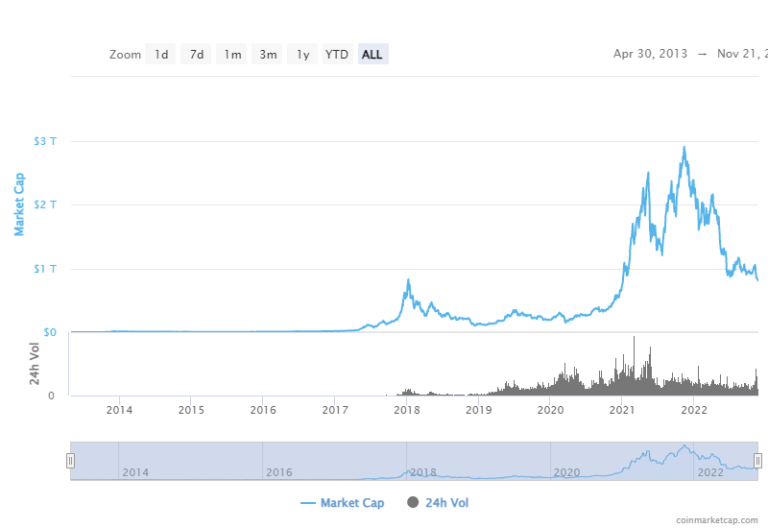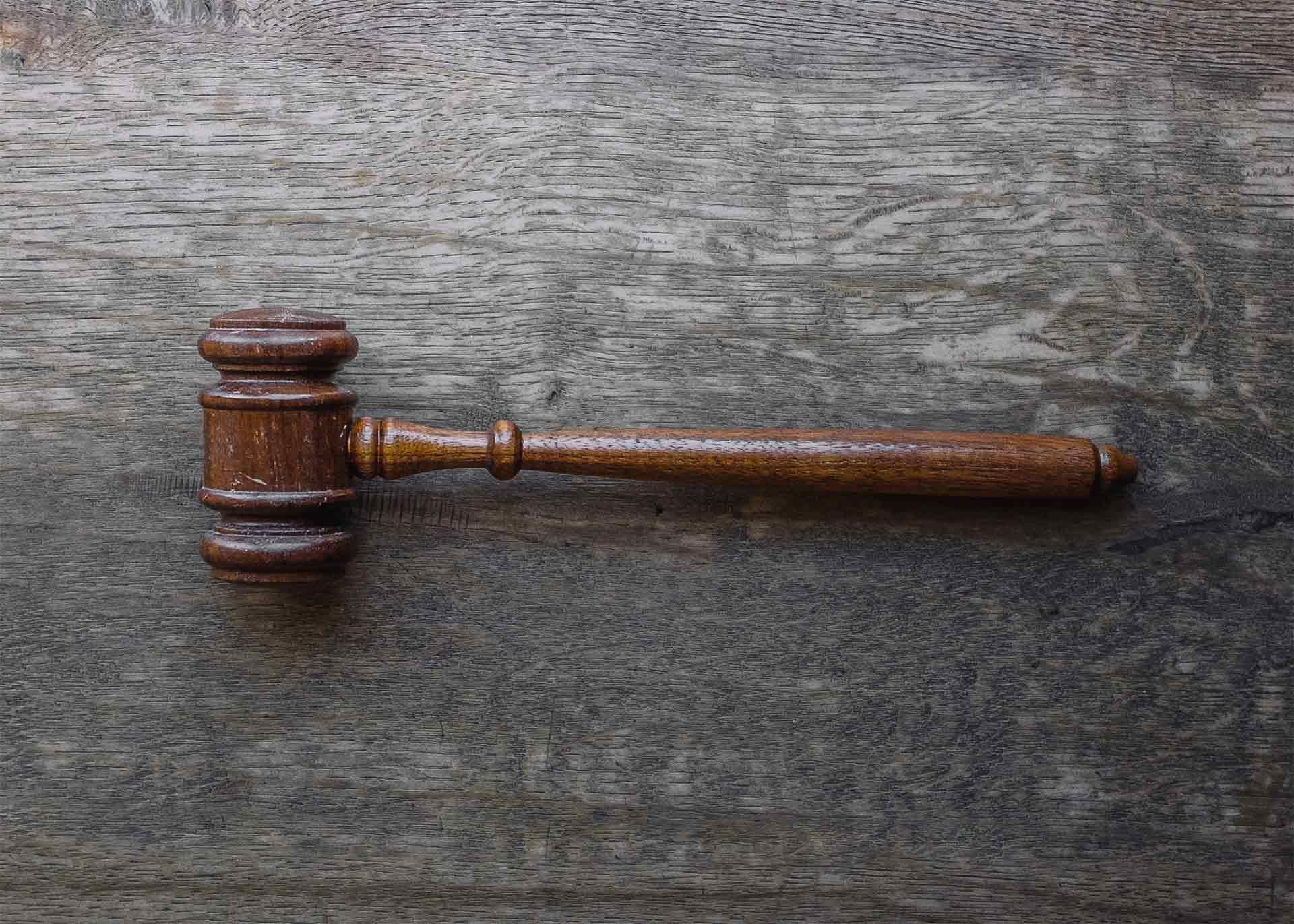Valuation Of Intangible Assets – Cryptocurrencies
Valuation of intangible assets – how to value cryptocurrencies
What is the nature of cryptocurrency?
In order to value any asset, whether it be an intangible asset or otherwise, the important starting point is to understand the nature of the asset and its characteristics. The information we publish below provides guidance to those interested in the valuation of cryptocurrencies, being a new type of digital asset.
Fiat currency (as distinct from the term ‘cryptocurrency’) includes sovereign-country, government-issued currencies like Australian Dollars (AUD), United States Dollars (USD) or Euros (EUR). It has been long established that fiat currency is used by a sovereign-country as its legal tender and relies on a centralised banking system to create the currency. Fiat currency is used to determine the value in a medium of exchange of goods and services across the global economy.
While cryptocurrencies may be effectively bought and sold and used as a medium of exchange like fiat currency, cryptocurrencies should not be considered like cash or cash equivalents, particularly as cryptocurrencies are not the legal tender of any sovereign country. As cryptocurrencies lack physical substance, it may be thought of as type of intangible asset.
The link between cryptocurrency and blockchain technology
Cryptocurrency is a relatively new form of digital currency, applying cryptography (i.e. use of encryption) using blockchain. A blockchain is a distributed ledger system using a sequence of blocks or units of digital information, stored consecutively on a public database.
Blockchains can be characterised as permissionless, permissioned, or a combination of both (i.e. hybrid). Permissionless blockchains allow any user to pseudo-anonymously join the blockchain network (i.e. become a node of the network) and do not restrict the rights of the nodes on the blockchain network. Conversely, a permissioned blockchain restricts access to certain nodes and may also restrict the rights of those nodes on the network – the identities of the users of the permissioned blockchain are known to other users of that permissioned blockchain. Permissioned blockchains can be controlled by one authority or by a consortium (i.e. controlled by a group).
As cryptocurrencies are reliant on blockchain technology, they are considered decentralised in nature (compared to fiat currencies, which relies on a central bank system) and cryptocurrencies are used as a medium of exchange. To better understand the nature of cryptocurrency, it is necessary and useful to consider that there is a difference between ‘crypto coins’ and ‘crypto tokens’, notwithstanding the nature of both things are considered cryptocurrencies.
What are crypto coins?
Crypto coins refer to any cryptocurrency that has a standalone, independent blockchain. The blockchain is a decentralised digitised ledger that records transaction information about a cryptocurrency in chronological order that is time-stamped and cannot be changed.
The Bitcoin (BTC) token was the first cryptocurrency in existence, created by software developers, under the pseudo name of Satoshi Nakamoto, in 2009. The Bitcoin blockchain was created specifically for the purpose of creating a peer-to-peer electronic cash system, sans a need for any financial institution and third-party intermediaries. Bitcoin was developed as a censorship-resistant store of value and medium of exchange that has a secure, fixed monetary policy. Today, Bitcoin is the most liquid cryptocurrency and has the highest market capitalisation[3] in the cryptocurrency sector.
The Ether (ETH) token was created on the Ethereum blockchain which was launched in 2014. The Ethereum blockchain was created for the purpose of utilising smart contracts for creating general-purpose decentralised computer programs. Unlike the Bitcoin blockchain, the Ethereum blockchain was not created for the purpose of its tokens being used as a medium of exchange, although the Ether token has since become a medium of exchange. Ether (commonly also referred to Ethereum) is now the cryptocurrency which has the second highest market capitalisation in the cryptocurrency sector after Bitcoin.
Crypto coins that are not considered to be a Bitcoin can be referred to as alt-coins. Examples of other alt-coins include Tether (USDT), Binance Coin (BNB) and Litecoin (LTC). Crypto coins (and crypto tokens) are stored on the blockchain wallet (or digital wallet). While Bitcoin was created as an alternative to cash and is widely used and accepted across the globe, some countries (less than 10 in total) specifically have banned the use of Bitcoin, whereas some other countries (including China) have limited restrictions in relation to the use of Bitcoin. In Australia Bitcoin is considered legal, however it is not accepted as legal tender.
Crypto coins such as Bitcoin, Ether and Litecoin are all examples of crypto tokens issued by a permissionless blockchain.
What are crypto tokens?
While crypto coins represent the native tokens (or native asset) of the permissionless blockchain which give rise to its ‘coin’, crypto tokens (i.e. tokens not classified specifically as a crypto coin) refer to a type of cryptocurrency which rely on an existing blockchain, such as the Ethereum blockchain (as one example).
The nature of a token is defined by the token issuer, which is typically connected with an underlying project that uses existing blockchain technology. It is relevant to note that there are thousands of different projects and crypto tokens built on top of the Ethereum blockchain. Crypto tokens represent a digital asset, with its ownership verified by the blockchain, which can be broken down into the following classification types:
- non-fungible tokens (or NFTs), where each NFT unit is considered unique from another unit, which is unlike typical currency (and therefore not generally considered to be cryptocurrency, although a tradeable type of digital asset); or
- fungible tokens, where each unit is considered indistinguishable from another unit and therefore each unit is interchangeable, which like typical currency (and therefore considered to be cryptocurrency). Fungible tokens can be further broken down into different types, such as:
- security tokens – which act like traditional shares in companies or units in trusts;
- utility tokens – which provide access to certain products or services of the token issuer; or
- governance tokens – which assign voting rights in a decentralised autonomous organisation (or DAO).
Crypto tokens may relate to permissioned blockchains which limit the rights of token holders. It is relevant to note that there are tens of thousands of crypto tokens which exist today[6] and there has been a very dramatic recent increase in the number of crypto tokens in the past year alone reflecting that a new crypto token can be easily created, which is analogous to the fact that nearly anyone can fairly easily register a company and issue shares to others.
What is the meaning of the ‘market value’ of cryptocurrencies?
The Australian Taxation Office (“ATO”) has published a guide called ‘market valuation for tax purposes’ which expands in greater detail on the ATO’s views on the concept of market value. The ATO guideline outlines the different classes of assets covered.
The International Valuation Standards Council (“IVSC”) is an independent, not-for-profit organisation committed to advancing quality in the valuation profession. Its primary objective is to build confidence and public trust in valuation by producing standards and securing their universal adoption and implementation for the valuation of assets across the world. The IVSC approved and issued International Valuation Standards Framework and General Standards (“IVS”) with an effective date of 1 July 2017 which have been updated with an effective date of 1 July 2020. IVS provides valuation professionals with relevant and authoritative guidance on valuation of any assets.
The following definition is a definition for ‘market value’, which is widely accepted:
“The estimated amount for which an asset or liability should exchange on the valuation date between a willing buyer and a willing seller in an arm’s length transaction, after proper marketing and where the parties had each acted knowledgeably, prudently and without compulsion.”
The following are significant matters in relation to what constitutes an opinion on the ‘market value’:
- The expression of market value is at a “valuation date”, reflecting an expression of value at a particular point in time. Accordingly, value may change over time, which can be due to one or more factors. In forming a conclusion on the market value of an asset at a point in time, the use of hindsight is considered not appropriate in forming an assessment of the market value of an asset as the information on which the valuation is based should, in general terms, have been in existence at or before the particular date of the valuation. More specifically, only those things which are known or knowable at the valuation date should be considered. The use of the term ‘knowable’ includes information that could be obtained with a reasonable degree of due diligence.
- Market value reflects a hypothetical or actual transaction between a “willing buyer” and a “willing seller”. A willing buyer and a willing seller are neither over-eager nor determined to buy/sell at any price.
- An “arm’s length transaction” is presumed to be between unrelated parties, each acting independently.
- “After proper marketing” means that the asset has been exposed to the market in the most appropriate manner to affect its disposal at the best price reasonably obtainable. A ‘fire-sale’ of an asset to quickly realise cash because the seller is in financial distress likely reflects a condition which would not reflect a sale under market value conditions.
- Where the “parties had each acted knowledgeably, prudently” presumes that both the willing buyer and the willing seller are reasonably informed about the nature and characteristics of the asset, its actual and potential uses, and the state of the market as of the valuation date.
What are the valuation approaches for cryptocurrencies?
A ‘valuation approach’ is a general way of determining value and there can be many different valuation methodologies available under any one particular valuation approach. IVS require consideration of three potentially relevant valuation approaches to value any asset being:
- market approach;
- income approach; and/or
- cost approach.
Market approach
The use of a market approach requires a comparison of the subject asset with an identical or comparable (similar) asset(s) for which price information is available. Generally speaking, cryptocurrencies that are tethered to a liquid crypto coin can provide a relevant starting point of reference and justification for using a market approach and further adjustments made by appropriate for:
- marketability (or liquidity) associated with a parcel of tokens to be valued (which is discussed below); and
- other specific risks relating to the subject crypto token, not inherent in the observed price of the crypto coin (which is discussed below).
Income approach
The use of an income approach provides an indication of value by converting future cash flow to a single current value. Under the income approach, the value of an asset is determined by reference to the value of income, cash flow or cost savings generated by the asset. Utility and/or governance tokens in particular are not created to return fiat currency to the token holder and without any data on the potential costs savings available to token holders, the use of traditional valuation methods available under income approach, such as the use of a discounted cash flow method or capitalised earnings methods are not applicable to valuing such tokens.
Cost approach
The use of a cost approach uses the economic principle that a buyer will pay no more for an asset than the cost to obtain an asset of equal utility, whether by purchase or by construction, unless undue time, inconvenience, risk or other factors are involved. The cost approach provides an indication of value by calculating the current replacement or reproduction cost of an asset and making deductions for physical deterioration and all other relevant forms of obsolescence. It is relevant to distinguish the underlying project upon which the tokens are issued (which would likely have a significant cost and time implication to recreate the technology infrastructure and collaborations with other parties) from the underlying token in considering the application of a cost approach to value a token.
Lack of marketability (or illiquidity) for cryptocurrencies
The marketability of a parcel of crypto tokens refers to the token holder’s ability to convert the parcel of tokens into cash (or perhaps another highly liquid crypto coin). There are two dimensions to marketability, being the price realised for a parcel of crypto tokens and the amount of time required to sell that parcel of crypto tokens – these two dimensions are related as it may be possible to reduce the time taken to sell the crypto tokens, by discounting the price. The more marketable a particular crypto token, the greater the ability to sell a large volume of crypto tokens near the quoted price.
CoinMarketCap identifies (in November 2022) that there are over 500 cryptocurrency exchanges, which are by their nature a decentralised exchange which creates a secondary market for the purchase and sale of over 20,000 cryptocurrencies. CoinMarketCap provides quantitative and qualitative data and information (including news) on cryptocurrencies and ranks cryptocurrencies by their market capitalisation.
In addition to ranking crypto tokens, CoinMarketCap identifies where a token is a tracked or untracked listing. A tracked listing is one which meets the following CoinMarketCap criteria:
- the token leverages cryptography, consensus algorithms or distributed ledgers, peer-to-peer technology and/or smart contracts to function as a store of value, medium of exchange, unit of account, or decentralized application;
- the token must have a functional website and block explorer;
- the token must be traded publicly, and actively traded on at least one (1) exchange (with material volume) that has tracked listing status on CoinMarketCap; and
- the token issuer provides a representative from the project with whom CoinMarketCap can establish open lines of communication for any clarifications.
An untracked listing would typically feature a token considered by CoinMarketCap to not include a material volume of transactions. Such a token reflects a lack marketability (or illiquidity) Notwithstanding a price for a crypto may be observed on listed on a decentralised exchange, from a valuation perspective, a risk factor for lack of marketability is applied.
Illiqudity of particular cryptocurrencies should be assessed in the prism of the price instability of cryptocurrencies. This price instability can be analysed by reference to market capitalisation of all cryptocurrencies. Figure 1 below is a chart depicting the market capitalisation (expressed in USD) of all cryptocurrencies over its existence (to November 2022) sourced from CoinMarketCap.
Figure 1: Market capitalisation of all cryptocurrencies per CoinMarketCap

Figure 1 above shows the market capitalisation going from less than USD$1 trillion to nearly USD$3 trillion back down to less than USD$1 trillion over the 2020, 2021 and 2022 years. The graph data includes Bitcoin, the cryptocurrency with the largest market capitalisation, representing no less than 32% of the cryptocurrency market over the time period shown in Figure 1 above (i.e. 2014 to 2022) and during the year 2021, Bitcoin represented up to approximately 70% of the cryptocurrency market. Figure 1 above indicates that there has been significant price volatility in the cryptocurrency market over the past 2 years (i.e. 2021 and 2022).
Professional judgement is required and applied in determining the size of the discount for lack of marketability. For listed companies, restricted stock studies might be referenced to inform on an illiquidity discount in relation to the valuation of ‘thinly-traded stocks’. In cryptocurrency, some crypto tokens may involve stalking which effectively represents a period of time in which tokens may not be sold, however it is not possible to observe a price for stalked tokens which therefore renders the determining the size of the discount for lack of marketability as a subjective matter.
What might be the specific risks for holding crypto tokens?
In addition to lack of marketability (or illiquidity) risk, consideration should be given to the following (non-exhaustive list of) specific risk factors which may be present in relation to holding crypto tokens:
- from the perspective of the token holder, the investment may not be considered to be regulated, e.g. lack of statutory protection for token holders;
- use of multiple early-stage entities;
- use of multiple early-stage technologies;
- explicit no assurance for the success statements issued by token issuers;
- various licences and permits may be required to operate which may not be forthcoming;
- businesses may merge, transfer and/or combine operations without needing the approval of token holders;
- the project may use different blockchain technology without needing the approval of token holders;
- future members and investments are not assured on the basis that reliance on joint venture arrangements and subsidiaries is needed which may or could change in the future without needing the approval of token holders;
- intellectual property rights may not be owned by the entities involved in the project;
- lack of diversification of business and dependence on the performance of a single investment or small group of investments;
- co-investing with joint ventures and third parties;
- reliance on key personnel and risk of loss of key personnel;
- financial commitment is required with no requirement of financial return;
- there may be limited access to liquidity for the project by selling its investments in subsidiaries;
- risk of insolvency (particularly if liquidity issues constrain the project/business from achieving its objectives);
- lack of operating history;
- susceptibility to a ‘black swan’ event;
- risk of governance failure with no governance rights attached to the tokens; and
- regulatory risk attached to the prohibition of tokens in some sovereign-country states.
Conclusion on valuation of cryptocurrencies
Valuation of cryptocurrencies is an inherently subjective exercise, however, with a thorough understanding of the nature of the digital asset, it is then possible to apply internationally recognised valuation approaches, methods and procedures (subject to available data and evidence) to arrive at a fundamentally sound conclusion of value, which may be expressed as falling within a range.
Disclaimer
AVG Forensic’s areas of expertise are in the fields of forensic accounting and valuation of assets, including intangible assets and businesses. Cryptocurrency is a digitally created asset and represents a paradigm shift in capital markets. This paper provides general information on blockchain technology and its numerous applications, including its application as cryptocurrencies, however, AVG Forensic does not claim any technological expertise in respect of blockchain technology. We reserve the right to not accept valuation engagements considered high risk.
Useful links
Information and links to documents about cryptocurrencies contained on the ATO website: https://www.ato.gov.au/individuals/Investments-and-assets/crypto-asset-investments/what-are-crypto-assets-/.
Information on cryptocurrencies contained on the Reserve Bank of Australia website: https://www.rba.gov.au/education/resources/explainers/cryptocurrencies.html.
Information on cryptocurrencies published by the Australian Securities and Investments Commission, via its Money Smart website: https://moneysmart.gov.au/investment-warnings/cryptocurrencies.
Information on blockchain technology and cryptocurrency via the education part of the Binance website known as Binance Academy https://academy.binance.com/en.
Information and links to documents contained on the CoinMarketCap website conmarketcap.com.
Endnotes
[1] An intangible asset is defined in International Valuation Standards issued by the International Valuation Standards Committee to be a “non-monetary asset that manifests itself by its economic properties. It does not have physical substance but grants rights and/or economic benefits to its owner”.
[2] Blockchain is a distributed ledger system using a sequence of blocks or units of digital information, stored consecutively on a public database.
[3] Market capitalisation is calculated as simply product of the supply of the coin (i.e. number of circulating coins) multiplied by the current price (i.e. measured by reference to a fiat currency, typically United States Dollars (USD)). Cryptocurrency exchanges may also refer to ‘fully diluted’ market capitalisation which is calculated as the maximum supply of the coin multiplied by the current price.
[4] Not considered an exhaustive list and different terms can be used to characterise fungible tokens.
[5] A DAO is an organisation constructed by rules encoded as a computer program that is often transparent, controlled by the organisation’s members and not influenced by a central government or regulatory body. In general terms, DAOs are member-owned communities without centralised leadership which is a feature of blockchain technology. A DAO, is somewhat akin to a legal entity, like a company, however it is not subject to any regulation by a central regulator, like the Australian and Securities and Investment Commission, and it is not bound by geographical jurisdiction. A DAO’s financial records and program rules are maintained on a blockchain (e.g. Ethereum) and the decisions of the DAO are governed by proposals and voting to ensure everyone in the organisation has a voice.
[6] According to CoinMarketCap, there are over 21,000 crypto tokens (including crypto coins) and over 500 crypto exchanges.
[7] The ATO’s market valuation guide can be found here which identifies a number of different classes of assets, such as real property, plant and equipment, businesses, goodwill, shares, units, liabilities, benefits provided and financial instruments. It does not list cryptocurrencies and digital assets.
[8] IVS 104 – Basis of Value, paragraph 30.1.
[9] Paraphrased from IVS104 – Bases of Value.
[10] IVS 105 –Valuation Approaches and Methods.
[11] The CoinMarketCap website home page is https://coinmarketcap.com/ and more information about CoinMarketCap can be found here: https://coinmarketcap.com/about/.
[12] References to ‘marketability’ and ‘liquidity’ are considered interchangeable for the purpose of this document.
[13] At a basic level, ‘stalking’ of crypto tokens is the concept of earning a potential reward on those tokens which are stalked. The nature of the reward will be different depending on the project however it may or may not include issue of more tokens, and/or voting (governance) rights.
Leave a Comment:
SEARCH ARTICLE:
SHARE POST:
RECENT ARTICLE:











